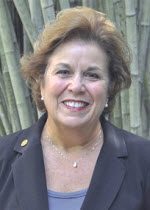
No Comments on Clinical Goes Virtual: One Faculty Experience 233
Editor’s note: The health sciences librarians and healthcare professionals we work with are responding to the COVID-19 pandemic in unique ways. We are honored to bring you their accounts of what those efforts look like. This month, we share with you Dr. Linda Connelly’s experience transitioning clinical curriculum to virtual at the University of North Florida Brooks College of Health School of Nursing where she is a faculty member.
Linda Connelly, PhD, MSH, ARNP, CNOR
COL (retired) USA Nurse Corps
University of North Florida
Brooks College of Health School of Nursing
It was mid-March and I was very much looking forward to spring break. No big plans, but a time to catch up, spend some time at the beach, and go to Orange Theory every day. Most of you know the rest of the story, but here is my version: I am nursing faculty at a university and in spring semester, I was teaching 81 second semester nursing students (college juniors). The group is large, so we split them in half: one half does rehabilitation clinical while the other half does psych clinical, then they switch. We had just entered the second half rotation and the students had attended two out of their eight clinical days. There were rumors things might change due to a virus, but I am not fazed by much, so I continued on my merry way focusing on spring break. Then the COVID-19 pandemic forced its way into our lives and everything changed.
Faculty were instructed to deliver our lessons virtually for two weeks following spring break. So, we planned during the break and began lecturing remotely while students learned in online classrooms. My thought was I could do anything for two weeks, especially given I have a certificate in online learning. However, the two weeks quickly extended to the remainder of the semester. All student services became remote/online.
The unprecedented situation extended to our clinical rotations. How do you make up hands-on care? I have a certificate in healthcare simulations, but that is with students in a simulated hospital room with an electronic mannequin and a two-way mirror. I spent a lot of time brainstorming ways to make up clinical. At the time, we did not have a virtual platform with avatars for clinical simulations. I reached out to colleagues and located several high-quality virtual simulations from Canada that were able to be accessed at no cost. That was the start of my clinical make up.
In my research, I stumbled on a group of nursing faculty who were trying to do the exact same thing (make up clinical), so I joined. In the group, I learned how to make virtual “Escape Rooms” and Bingo, which served as additional make up for clinical hours. It was actually getting fun. I brainstormed with the four clinical faculty in my course and we all designed case studies for clinical hours. I really felt like we were getting it together. My goal “to provide students with the same education I would have provided if we were to meet in person” kept coming to mind. But how could I do this for clinical? The lectures via Zoom/WebEx and testing were going well, but I did not have any face-to-face time with the students for clinical. In one of my brainstorming moments, I decided that we would have students complete a care plan and medication cards on a patient from their two days of clinical before spring break; however, some students pushed back that they could not remember their patients from weeks ago. At about that time, another faculty member shared a case study she authored on a patient she had with a student. With permission, I used that case study while adding the concepts from my course and, just like that, the students had a patient for a care plan and med cards. “Zoom Patient Report” was scheduled for all students in the course and we stepped off the curb into Zoom clinical. I am so glad we did that in this course. The students reported in their course reflections they felt like they learned a lot from the one-on-one time with the faculty. The faculty, too, got a good idea of the knowledge level of the students and had many opportunities for teachable moments. I do not want to continue virtual clinical, but if I had to do it over again, I would have jumped in sooner with the Zoom patient reports.
Having successfully completed the virtual clinical experience, our students are without a doubt prepared. They will now be able to go out, focus on being leaders, and develop ways to be creative with their practice. The field of nursing has taken a different focus for our nursing students. The virtual clinical was meaningful and powerful for them. They will take their drive and passion and use it to make an impact on patient care—because we need it now more than ever.


Leave a comment